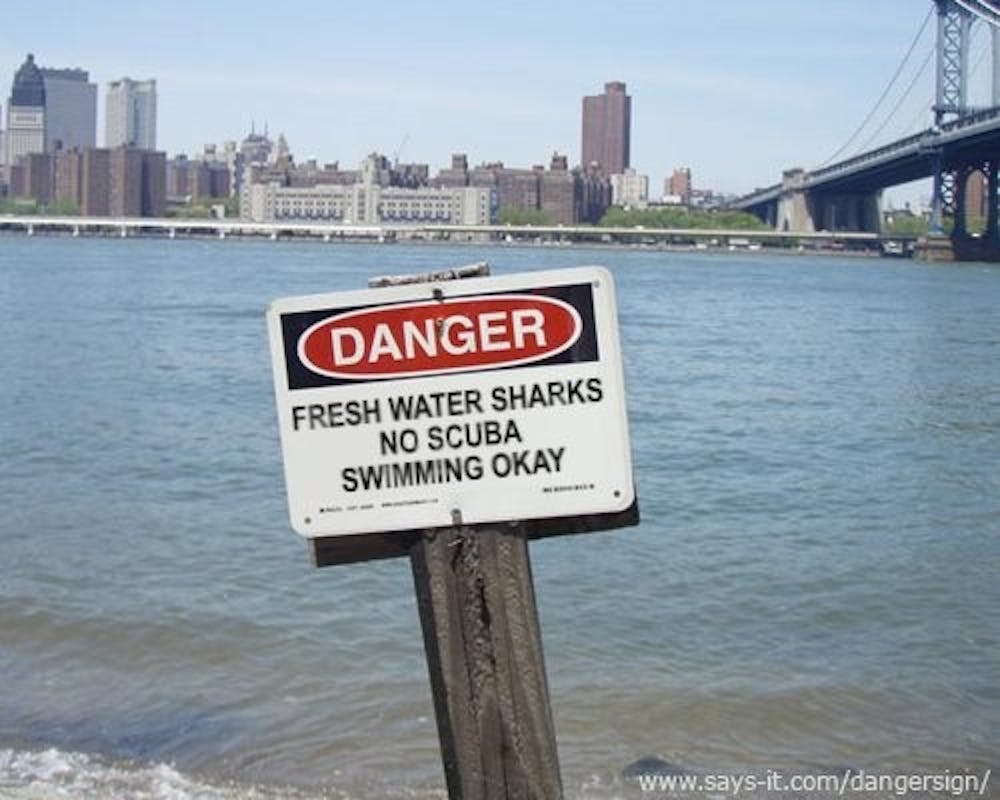Almost 100 years after the famous New Jersey shark attacks that inspired Steven Spielberg’s blockbuster “Jaws” and Discovery Channel’s Shark Week instilling fear in people, there has been a fascination with sharks and shark attacks in recent years. Despite the public’s near-obsession with sharks and naysayers explaining away the possibility of shark attacks, they seem to be on the rise.
Accuweather.com reports that this rise is due to human and seal population increases, shark migration and warming temperatures.
Despite the rise in attacks, Dr. Samuel H. Gruber of the Bimini Biological Field Station says there is very little to worry about.
“Getting attacked by a shark is almost the most unlikely thing imaginable,” Gruber told Accuweather.
According to research from the Florida Museum of Natural History’s International Shark Attack
File, a person is more likely to die from a tornado, being struck by lightning or being attacked by a dog than from being attacked by a shark.
While shark attacks are rare, a larger concern to be aware of is a shark bite. And yes, there is a difference.
“A shark attack is an interaction between humans and sharks that results in significant injuries and an occasional death. Shark bites, on the other hand, are interactions in which injuries to humans are small, similar to that of a dog bite,” George H. Burgess, Director of the International Shark Attack File, told Accuweather.
New Smyrna Beach, Fla. is considered the “shark-bite capital of the world,” with approximately
25 reported shark-bites per year. Daytona Beach, Fla., Myrtle Beach, S.C. and Cape Hatteras,
N.C. join New Smyrna Beach as some of the most likely places to get bitten by a shark.
While the southeast is home to these beaches, northern and mid-Atlantic beaches are not completely safe.
New England beaches have seen a rise in their shark populations thanks to seal migration.
According to Accuweather.com, sharks consider seals “an easy meal” and will follow seals north.
Warmer water temperatures in the north also attract sharks. “At this time of year, water temperatures in the Northeast are reaching their peaks, so sharks have been moving northward and dispersing, following the warming temperatures,” Burgess told Accuweather.
Despite the rise in attacks and bites, researchers insist that the odds of being attacked are low and that sharks are unfairly feared.
Burgess explains to Accuweather.com that this decade will inevitably see a rise in shark attacks simply because there has been a rise in human population.
Despite the low risk of attack, Burgess offered Accuweather.com the following tips to avoid being attacked by a shark:
1. Avoid being in the water between sunset and sunrise.
2. Stay in a group and do not wander too far from shore.
3. Avoid wearing shiny jewelry; the reflected light resembles fish scales.
4. Avoid brightly colored or patterned clothing, as sharks can see contrast well.
5. Do not enter waters being used by sport or commercial fisherman.
6. Avoid entering waters with sewage output and/or entering the water if you are bleeding.




The Slate welcomes thoughtful discussion on all of our stories, but please keep comments civil and on-topic. Read our full guidelines here.